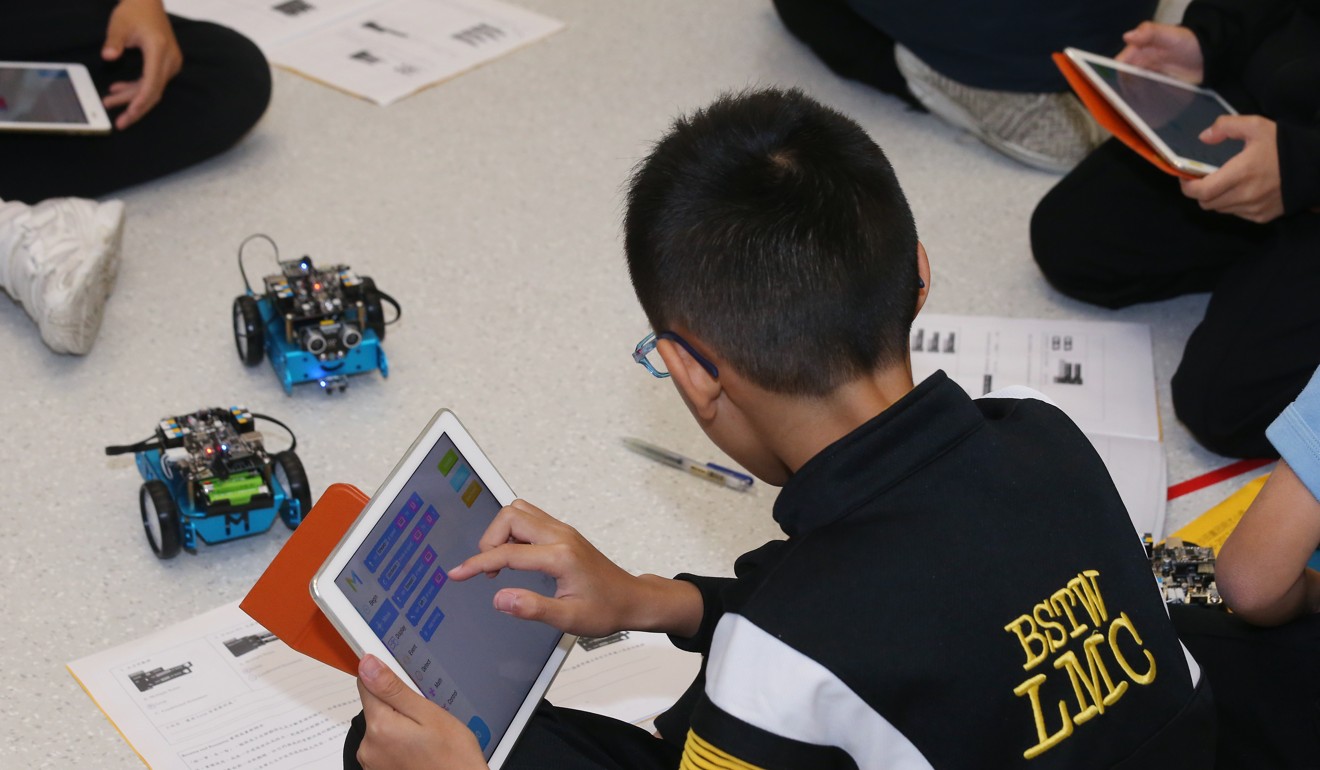
Here’s how Hong Kong parents can balance the amount of time their children spend on their computer screens
Founder of e-learning group urges against too much exposure before the age of eight and praises the role of educational tools that are not digitally based
Schools in Hong Kong have embraced technology by adopting e-learning, yet such easy access raises an important question: how to balance the amount of time children spend on their computer screens?
Erwin Huang, associate professor at the University of Science and Technology, describes technology use as a double-edged sword.
“It’s a fact that we can’t live without it, but where do we start and where do we end? One question to ask is: are you relying too much on the device?”
Huang says if pupils can only use a keyboard with the help of the intelligent personal assistant Siri or the Android operating system, then there is a problem.
“Many can’t even recognise or spell words,” he adds.

The founder of education group eLearning Consortium maintains that some knowledge can only be learned in ways that are not digitally based.
“Especially for kids in primary school, there are things we still need to teach by recitation, like the multiplication table, the alphabet or basic Chinese characters,” he says. “If you don’t learn it, then there’s no simple way to get it.”
Instead of allowing the digital world to fully take over society, Huang believes it is time for the government to incorporate technology into the local education system while enhancing the younger generation’s learning abilities.
Here’s how Hong Kong parents can balance the amount of time their children spend on their computer screens
“We must make good use of available tools,” he explains. “We could use a digital pen to help us so that when we write incorrectly, the system can redirect us and guide us to accuracy.”
He points to the example as a case of technology complementing “traditional ways of learning”.
The whole idea is to tailor a system and design a curriculum based on individuals’ learning needs
As Huang sees it, officials are going about the matter with the wrong approach.
“The administration believes e-learning is all about putting everything online, replacing books with tablets to lessen the weight of schoolbags. But the whole idea is to tailor a system and design a curriculum based on individuals’ learning needs.”
With e-learning here to stay, Huang argues parents need to play a role by monitoring their children’s screen time.
He suggests that before the age of eight, children should not be excessively exposed to technology, and only when they are at Primary Three level should they start exploring electronic devices with parental supervision and to learn online literacy.
Even so, Huang says young children should be limited to fewer than five hours of screen time daily because their eyes are still developing.

